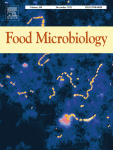Ver ítem
- xmlui.general.dspace_homeCentros Regionales y EEAsCentro Regional Mendoza - San JuanEEA MendozaArtículos científicosxmlui.ArtifactBrowser.ItemViewer.trail
- Inicio
- Centros Regionales y EEAs
- Centro Regional Mendoza - San Juan
- EEA Mendoza
- Artículos científicos
- Ver ítem
Modulation of aroma and chemical composition of Albarino semi-synthetic wines by non-wine Saccharomyces yeasts and bottle aging
Resumen
Saccharomyces yeasts from different origins and species fermented in a semi-synthetic must containing aroma precursor of cv. Albari˜no and polyfunctional mercaptans precursors. The resulting wines were subjected to accelerate anoxic aging. Afterward, aroma profiles were analyzed by distinct gas chromatography methodologies. Cryotolerant strains showed better fermentation performances with significant differences in volatile and nonvolatile fermentation
[ver mas...]
Saccharomyces yeasts from different origins and species fermented in a semi-synthetic must containing aroma precursor of cv. Albari˜no and polyfunctional mercaptans precursors. The resulting wines were subjected to accelerate anoxic aging. Afterward, aroma profiles were analyzed by distinct gas chromatography methodologies. Cryotolerant strains showed better fermentation performances with significant differences in volatile and nonvolatile fermentation products than Saccharomyces cerevisiae (S. cerevisiae). We suggested that the highest levels γ-butyrolactone and diethyl succinate in Saccharomyces uvarum (S. uvarum) strains, together with their substantial succinic acid yields, could be related to greater flux through the GABA shunt. These strains also had the highest production of β-phenylethyl acetate, geraniol, and branched-chain ethyl esters. The latter compounds were highly increased by aging, while acetates and some terpenes decreased. S. kudriavzevii strains showed a remarkable ability to release polyfunctional mercaptans, with SK1 strain yielding up to 47-fold and 8-fold more 4-methyl-4-mercaptopentan-2-one (4MMP) than S. cerevisiae and S. uvarum strains, respectively. The wild S. cerevisiae beer isolate showed a particular aroma profile due to the highest production of ethyl 4-methylvalerate (lactic and fruity notes), γ-octalactone (coconut), and furfurylthiol (roasted coffee). The latter compound
is possibly produced from the pentose phosphate pathway (PPP). Since erythritol, another PPP intermediate was largely produced by this strain.
[Cerrar]

Autor
Perez, Maria Dolores;
Denat, Marie;
Minebois, Romain;
Heras, Jose Maria;
Guillamon, Jose Manuel;
Ferreria, Vicente;
Querol, Amparo;
Fuente
Food Microbiology 104 : 103981 (June 2022)
Fecha
2022-03-02
Editorial
Elsevier
ISSN
0740-0020
Formato
pdf
Tipo de documento
artículo
Palabras Claves
Derechos de acceso
Abierto
 Excepto donde se diga explicitamente, este item se publica bajo la siguiente descripción: Creative Commons Attribution-NonCommercial-ShareAlike 2.5 Unported (CC BY-NC-SA 2.5)
Excepto donde se diga explicitamente, este item se publica bajo la siguiente descripción: Creative Commons Attribution-NonCommercial-ShareAlike 2.5 Unported (CC BY-NC-SA 2.5)


